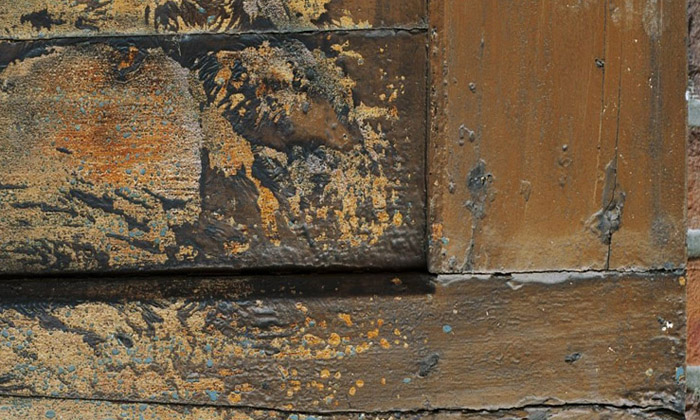Pay safely and quick with iDeal
Pay safely and quick with iDeal
Ecoatex Plus – Safe, biodegradable, viscous paint stripper developed as an alternative to paint strippers based on methylene chloride, pyrrolidones, methanol, caustic soda or highly flammable products.
Remosolv Plus – Fast-acting, safe, biodegradable paint stripper and ink remover.

Paint protects or beautifies objects by coating them with a pigment. There are various types of paint. Each material and each room requires a different type of paint. Paint usually consists of three parts, a solid part and two liquid parts. The solid part consists of a dye or pigment. The first liquid part is the binding agent (a natural resin, synthetic resin or an oil that becomes solid after drying. The second liquid part is a thinner (water or turpentine) with the purpose of diluting the paint so it can be applied better. A coat of paint can have one or more functions such as protection, beautification (colour and structure), cleanability and visibility (safety colours). A paint system often consists of several layers in which each layer has a function. For example, a primer provides adhesion, filling and sandability, a topcoat or pre-lacquer layer for layer thickness build-up and the topcoat layer for the aesthetic and protective finish.
Latex paint is a solvent-free, water-dilutable emulsion paint. It contains little or no volatile organic solvents. Latex paint contains preservatives against mould and bacterial growth.
Paint can be applied to wood, walls, metal and concrete and is used in various industries, particularly the construction, automotive and metalworking industries.
The solvents in paint can create a harmful working environment, especially if there is insufficient ventilation, due to the rapid evaporation of these solvents. Psychoorganic syndrome (POS) is irreversible damage to the brain caused by the inhalation of harmful solvents.
Flaking paintwork looks unkempt. If the paint starts to peel, it needs to be removed completely. This is a job that has to be done with care to avoid damaging the surface unnecessarily.
Removing paint is a time-consuming task. Especially when several layers are applied on top of each other. The degree of difficulty also depends on the surface (plastic, stone, car paint, glass, wood etc.).
It is very important to keep surfaces well protected. Old materials and irregularities that can trap dirt are a breeding ground for micro-organisms.
With our solutions, you can remove all types of paint from all surfaces. The most common applications are:
Oil-based paint is removed using paint strippers, a sanding machine or a paint burner. Painting, coating, damage repair and polyester processing applications in yacht painting companies often use highly volatile, harmful and environmentally damaging products, often based on substances such as methylene chloride and thinners. Many of these substances are therefore major contributors to the occurrence of P.O.S. (psychoorganic syndrome). The filters of spraying equipment also regularly get clogged when using thinner as a rinse agent.
Acrylic paint is used in various trades. The paint can be applied to objects and surfaces made of wood, metal, textile and glass. Acrylic paint is often removed using harmful substances such as acetone or scraped off with a paint scraper on non-porous wooden surfaces. Acetone is harmful to people (POS) and the environment.
Traditional paint strippers work well but do have a number of disadvantages. They often contain methylene chloride, are irritating to the skin, dangerous to the eyes, environmentally harmful, very dangerous to health and only suitable for removing a few layers of paint on small surfaces. Ecoatex Plus can be used to remove paints, lacquers and coatings such as synthetic and water-dilutable alkyd resin systems, chlorinated rubber paints, hybrid systems, dispersion paints, polyurethane alkyds as well as varnishes, decorative plasters, certain types of glue and graffiti. Ecoatex Plus has been tested by a reputable paint brand and came out as the best alternative to methylene chloride paint stripper.
There are several ways to remove the paint layer:
The first option is to sand everything off. This takes time, but is the cheapest solution.
When burning off paint, you usually remove the entire layer in one go. When old paint melts, harmful fumes are released. Put on work gloves to prevent smouldering paint shavings getting on your skin. An electric heat gun is easier to use than a burner. With a burner, it is easier to create scorch marks, which then need to be repaired. There is also a greater fire hazard because paint shavings catch fire.
Paint scrapers come in different shapes and sizes. The one you need depends on the profile of the substrate. If the surface is porous, the paint in the pores needs to be removed carefully with a scraper.
Many paint strippers are aggressive to the environment and to you, and they do not work as well on hard paint layers, where the treatment needs to be repeated several times. Make sure you clean the surface very thoroughly before repainting. Do not throw the scraped-off paint shavings into the rubbish bin. Put them in a bag and submit them as small chemical waste to the chemical waste collector or waste station in your community.